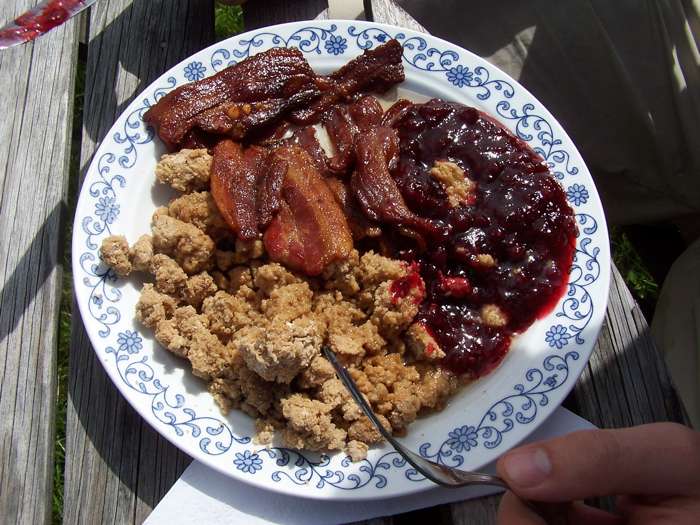- Startpage
- In English
- The Inventory
- Nävgröt with pork and lingonberries
Nävgröt with pork and lingonberries
Nävgröt is a type of porridge made from skrädmjöl, a flour made from toasted oats. The porridge is normally served with roast pork and lingonberries. Nävgröt and skrädmjöl are associated with the province of Värmland.
Location: Värmland

Skrädmjöl is made from locally grown oats. Toasting the oats gives them a nutty flavor. The oats are then ground into fine flour using a stone mill. Nävgröt is made by mixing skrädmjöl into boiling salted water. The porridge should have a dry texture, and can be eaten with bare hands. The word “nävgröt” probably derives from the habit of eating the porridge with one’s hands, “näve” being the Swedish word for fist.
Porridge is a dish with ancient origins. Various kinds of porridge have been served as an everyday staple or as a festive dish accompanied by melted butter or jam. Nävgröt was introduced to Sweden during the 16th and 17th centuries by Finnish immigrants, who practiced slash-and-burn agriculture in the remote woodlands of Värmland, Dalarna, Hälsingland, and Härjedalen. This method involves cutting down trees and burning large areas of forest, creating fertile soil in which to grow crops. Oats, rye, and barley were the most commonly grown grains. Nävgröt was a staple food for the loggers and charcoal burners in these regions.
There are two remaining traditional mills that produce skrädmjöl in Värmland today. The process includes toasting, peeling, and milling the oats correctly. This is a complex process that requires vast knowledge and experience. The traditional methods of producing skrädmjöl are mostly passed on by farmers and millers in Värmland. Many families still cook and serve nävgröt in their homes today. There are also organizations committed to preserving knowledge of the traditions connected to nävgröt.

.jpg)